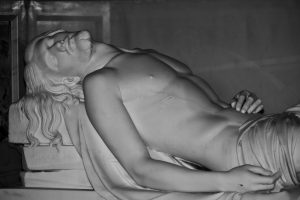Archival Moment
April 14, 2012
 On April 14, 1912, there were three telegraph operators on site at the Marconi Company Wireless station at Cape Race, Newfoundland. Walter Gray, Jack Goodwin and Robert Hunston .
On April 14, 1912, there were three telegraph operators on site at the Marconi Company Wireless station at Cape Race, Newfoundland. Walter Gray, Jack Goodwin and Robert Hunston .
Shortly after the first distress call, from the Titanic, Robert Hunston at Cape Race observed in his log book “The Titanic Disaster as Viewed from Cape Race”
“J.C.R. Goodwin on watch hears Titanic calling C.Q.D. giving position 41.44 N 50.24 W about 380 miles SSE of Cape Race.”
Water Gray, the man in charge of the Marconi Station at Cape Race later wrote a book (The Life Story of an Old Shetlander, 1970) about the experience at Cape Race on the night of the disaster. He wrote:
“Later in the evening the second operator called out: “Mr. Gray the Titanic has struck an iceberg and is calling C.Q.D. I immediately dropped what I was doing and ran to the operating room.”
Is it possible that all three wireless operators were away from their post (a total break with company policy) and that the only person in the wireless operating room at the time – when the distress call was given by the Titanic was a very curious 14 year old boy named James (Jimmy) Myrick?
Dave Myrick, President of the former Irish Loop Amateur Radio Group lays claim that his great uncle, James (Jimmy) Myrick who was then 14 years old, was visiting the Marconi Station and was alone for a few minutes during which time he heard the Titanic’s first CQD/SOS message.
The family contends that James (Jimmy) Myrick swore to the three wireless operators that he would protect their jobs – that he would not take credit for being the first to take the message. He kept his secret , only confessing the truth to his family when he was an old man confident that he had been true to his promise to the Marconi operators when they lived.
At the Marconi Wireless Station that night all communication with the residents of Cape Race and the province (then country) fell silent. Not even the Prime Minister or Governor were allowed any information. The three wireless workers were instructed by head office in Montreal that “operators are bound to secrecy” and were not to release any information.
At Cape Race that morning – the Lighthouse Keeper – John Myrick who lived just a few feet from the Marconi Station noted in his journal
“ The Titanic of the White Star Line struck an ice berg off here last night and went down. She was on her first voyage, a lot lost.”
If the Marconi Operators were sworn to silence – the only source that John Myrick would have had for this information may have been young Jimmy Myrick – who may have taken that first distress call.
Recommended Archival Collection: At the Rooms Provincial Archives Division: The Cape Race Log Book: A journal of predominantly one line entries highlighting events of local, national and international interest, as maintained by various members of the Myrick family at Cape Race. The journal includes reference to the sinking of the Titanic.
Another Newfoundland Connection: http://archivalmoments.ca/2012/04/my-god-gray-the-titanic-has-struck-a-berg/











